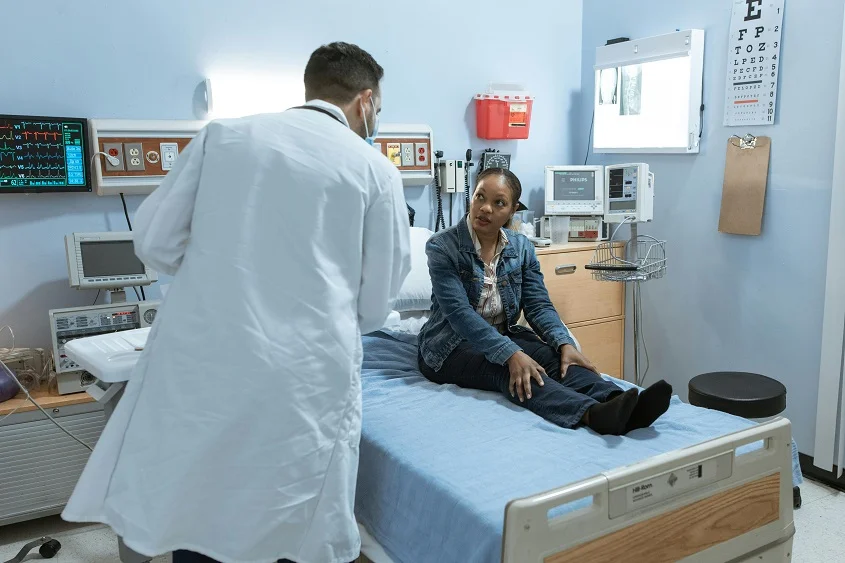Good communication in healthcare is not optional. It directly affects how safely and effectively patients are treated. Every conversation, update, or note has the potential to support healing or introduce risk.
While hospitals invest in advanced tools and expert staff, they often overlook the basics. A missed lab result, a misunderstood dosage, or an unclear discharge plan can lead to serious harm.
On the surface, these may seem like isolated errors. In reality, they are symptoms of deeper communication issues that affect patient outcomes every day. The problem is common, but it can be fixed. By identifying where breakdowns happen and applying practical changes, healthcare providers can reduce preventable risks and improve safety across the board.
Where Things Break Down: From Handovers to Language Barriers
Poor communication in healthcare doesn’t follow a single pattern. It can show up between departments, like when a surgical team assumes post-op instructions were passed on, but they weren’t. Or when a patient’s chart isn’t updated in time, leading someone to act on outdated information.
Sometimes, the breakdown happens directly between the clinician and the patient. This becomes especially risky when there’s a language barrier. A patient who doesn’t fully grasp what the provider is saying might pretend to understand just to avoid feeling uncomfortable, even if they’re confused about medications or follow-up care.
This is where medical translation becomes essential. It refers to the use of trained, certified interpreters or translation tools to help patients understand medical information in their preferred language. It’s not just about word-for-word conversion; it’s about ensuring the meaning and intent are clear, especially when medical terms are involved. When done properly, it lowers the chances of misdiagnosis, wrong treatments, and gaps in care.
Relying on family members or untrained staff to interpret can lead to errors, especially if they miss or misinterpret critical details.
Real-World Consequences of Poor Communication
The effects of communication failure in healthcare are not hypothetical—they’re real and well-documented.
Take medication errors, for instance. The Institute of Medicine reports that at least 1.5 million people are harmed each year by medication errors in the U.S., many of which can be traced back to unclear instructions, misheard information, or bad handwriting.
Hospital readmissions are another major issue. A patient who leaves the hospital with vague discharge instructions or without a clear understanding of their home care plan is far more likely to return, often with worsening symptoms. In many of these cases, the root cause isn’t the initial condition. It’s the lack of clarity around how to manage it after leaving.
And during emergencies, when time and precision are critical, even a small communication delay can mean the difference between a life saved and a tragedy. Imagine a trauma patient arriving in the ER, but the intake team isn’t informed about a serious allergy. That’s a preventable risk, one that starts with poor information flow.
What Gets in the Way of Good Communication?
Sometimes, communication fails because the environment is chaotic. Hospitals and clinics are high-stress, fast-paced spaces. People are tired. Alarms are beeping. Staff are pulled in multiple directions. In those conditions, even the most skilled professionals can miss a message or forget to pass one along.
Other times, it’s about hierarchy. Junior staff may hesitate to speak up if they think a senior physician made a mistake. Or they may be unsure if it’s their place to clarify a confusing order. That silence, driven by fear or uncertainty, can cost lives.
Technology can also be a double-edged sword. While electronic health records have improved access to information, they can also lead to overreliance on documentation instead of real-time communication. Just because something was typed into a chart doesn’t mean everyone saw it or understood it.
Fixing the Problem: What Actually Works
Improving communication in healthcare doesn’t require a complete system overhaul. But it does require consistent, thoughtful changes at multiple levels. Here’s what that can look like:
1. Standardize Handovers
One of the simplest ways to prevent errors is by making handoffs between shifts or departments more structured. Tools like SBAR (Situation, Background, Assessment, Recommendation) help ensure everyone communicates critical details the same way, every time.
This not only reduces forgetfulness but also gives team members a clear script to follow—even when things are hectic.
2. Prioritize Language Access
Hospitals and clinics need to invest in qualified medical interpreters and on-demand translation tools. Whether it’s in-person, over the phone, or through a video service, patients should be able to understand their care fully, no matter what language they speak.
That also means avoiding informal or makeshift interpreting solutions. Clear, professional translation protects both the patient and the provider.
3. Train for Clear, Direct Communication
Communication isn’t just about talking, it’s about making sure the message is received and understood. Providers should be trained to check for understanding, especially during high-risk conversations like giving diagnoses, discussing treatment options, or preparing for discharge.
Simple techniques like “teach-back” (asking patients to explain the plan in their own words) can quickly reveal if there’s confusion.
4. Foster a Culture of Safety
Staff at every level should feel safe to ask questions, admit mistakes, and clarify uncertainties. When communication is tied to blame or shame, people stay quiet. That’s dangerous.
Instead, healthcare leaders need to encourage open dialogue, active listening, and team accountability. When mistakes are addressed without judgment, learning happens, and future risks go down.
5. Use Technology Thoughtfully
Digital tools can help improve communication, but they need to be used with intention. Alerts should be meaningful (not overwhelming), messages should be acknowledged, and documentation should support—not replace—verbal check-ins.
Regular audits can help teams see where breakdowns are happening and identify small adjustments that can make a big difference.
At the end of the day, every patient wants to feel heard, understood, and safe. That only happens when healthcare communication is clear, timely, and complete.
Fixing communication issues doesn’t always require more time or money—often, it just requires more attention. By slowing down, listening closely, and building systems that support better dialogue, healthcare providers can dramatically reduce patient safety risks and improve outcomes for everyone.
It’s not about being perfect, it’s about being clear. And in healthcare, clarity saves lives.







